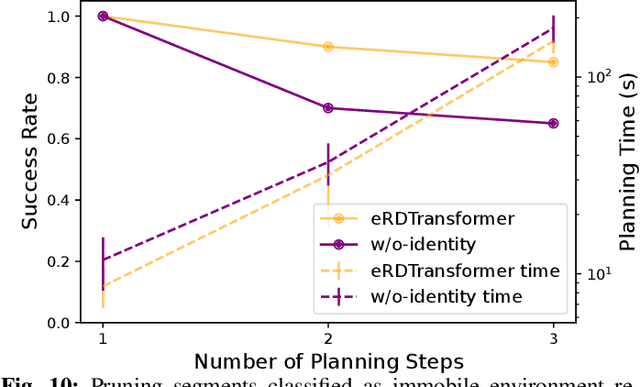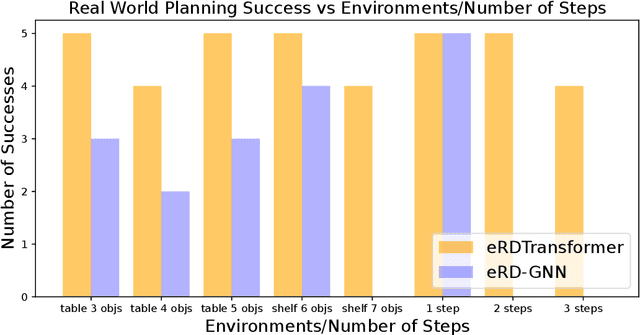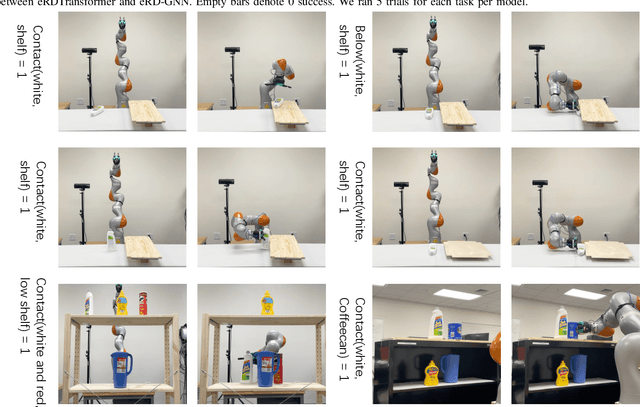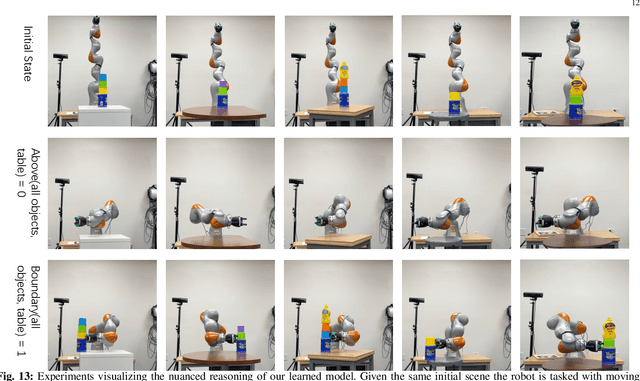Latent Space Planning for Multi-Object Manipulation with Environment-Aware Relational Classifiers
Paper and Code
May 18, 2023



Objects rarely sit in isolation in everyday human environments. If we want robots to operate and perform tasks in our human environments, they must understand how the objects they manipulate will interact with structural elements of the environment for all but the simplest of tasks. As such, we'd like our robots to reason about how multiple objects and environmental elements relate to one another and how those relations may change as the robot interacts with the world. We examine the problem of predicting inter-object and object-environment relations between previously unseen objects and novel environments purely from partial-view point clouds. Our approach enables robots to plan and execute sequences to complete multi-object manipulation tasks defined from logical relations. This removes the burden of providing explicit, continuous object states as goals to the robot. We explore several different neural network architectures for this task. We find the best performing model to be a novel transformer-based neural network that both predicts object-environment relations and learns a latent-space dynamics function. We achieve reliable sim-to-real transfer without any fine-tuning. Our experiments show that our model understands how changes in observed environmental geometry relate to semantic relations between objects. We show more videos on our website: https://sites.google.com/view/erelationaldynamics.
 Add to Chrome
Add to Chrome Add to Firefox
Add to Firefox Add to Edge
Add to Edge